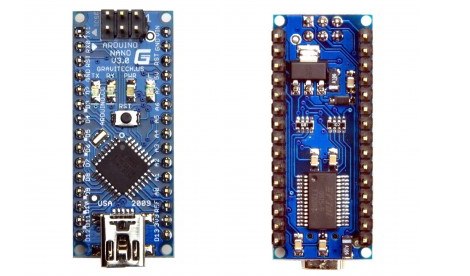
We’ve had a lot of requests in the comments for more Arduino centered posts so we were happy when [Njay] told us about his EDuino board. This is a minimal Arduino clone that has a crystal and its capacitors, a pull-up resistor and button on the reset pin, and a detachable serial programming connection. He also has a breadboard-friendly version seen above with all the interface pins on one side of the board. This is certainly a useful project and we’re glad to see the board files available for download. This does get us thinking… is this an Arduino, or is it an AVR ATmega168 breakoutboard that happens to use the Arduino boot loader and programming language?















